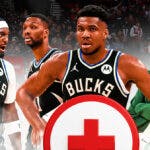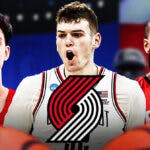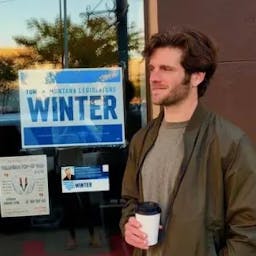The most controversial and potentially consequential offseason in Portland Trail Blazers history is over. Media day is finally here, and with it come many unknowns about Portland's present and future.
Here are some of the most pressing questions the Blazers need to answer on Monday as they begin official preparations for the 2021-22 season.
Where is Damian Lillard's head?
It's clear for now that Lillard's focus is squarely on his incumbent team. He indicated as much in a recent Instagram post calling Portland “my city,” and multiple teammates insisted in August that Lillard reiterared to them he's fully committed to the Blazers for 2021-22. All subsequent reporting after Lillard squashed a supposedly imminent trade demand in mid-July suggested he would give Billups and an updated roster at least one full season's chance to prove Portland can compete for a title, too.
Lillard is notoriously candid with the media, among the many reasons why summer-long rumors about his status always deserved a grain of salt. He even said it himself on multiple occasions: Don't read into anything about his plans for the future or current state of mind unless you hear it from Lillard himself.
Lillard hasn't spoken publicly in a question-and-answer setting since winning gold with USA Basketball in Japan. While it would shock to hear him give an unfiltered view into his long-term mindset regarding the Blazers, any updated lens into his thinking is bound to make headlines—and potentially produce a whole new slew of trade hypotheticals across the league landscape.
How big is Chauncey Billups' planned rotation?
Terry Stotts was mostly beholden to a nine-man rotation during his near-decade in Portland, last season toggling between Anfernee Simons, Nassir Little, and Derrick Jones Jr. as last off the bench when the Blazers were fully healthy. Simons ultimately won that job, and is due for a bigger reserve role after establishing himself as a viable rotation player last season. Billups has told Little he'll be getting regular minutes in 2021-22, too.
Portland's starters are set in stone for now, while both Larry Nance Jr. and Cody Zeller will be nightly contributors off the pine. That's nine players already, even before accounting for Tony Snell and Ben McLemore, both of whom would be capable tenth men, at least in the regular season. Will Billups stick with Stotts' approach, or extend his rotation to double-digits?
The bet here is that Portland deploys a much more variable rotation this season based on matchups, injuries and Billups' nightly whims. Ty Lue has never been afraid to shake up his lineups on a seemingly random basis, and Billups' coaching ethos was directly influenced by his longtime friend last season as a rookie assistant with the LA Clippers. Don't be surprised if Billups is a bit more conservative with minute totals, either, specifically for Lillard and McCollum.
What will C.J. McCollum's shot chart look like?
Billups made local headlines in August by ostensibly decrying the league's collective, seemingly neverending uptick in three-point rate. But just because he doesn't want the Blazers striving to “get up 50 threes” hardly means Billups will have Portland zigging into mid-range as most every other team in basketball zags further beyond the arc. He just wants his team taking the right three-pointers—from the right players, at the right spots and at the right time in any given possession.
How McCollum tailors that approach to his game is among the Blazers' most important statistical swing factors in 2021-22. Before being sidelined by a broken foot last season on January 16, McCollum had taken 55 percent of his shots from deep, an easy career-high that propelled him to new levels of production and efficiency. He didn't maintain that eye-popping rate of triples after coming back from injury two months later, trading threes for non-paint twos and in general shouldering a slightly lesser offensive load. About 44 percent of his field goal attempts were threes after coming back from injury in mid-March, a lower rate that still would have been the highest of his career since his rookie season in 2013-14.
Billups won't outwardly discourage McCollum from embracing his time-honored status as one of the game's most proficient mid-range shooters the way Stotts did last season, when Portland's team-wide goal was to jack threes at a higher clip than in previous seasons. The assumption here, though, is the Blazers will still be better off offensively if McCollum makes a concerted effort to get his three-point rate back above 50 percent.
How often does Portland want to play small?
Portland's small-ball personnel is far superior than it was in 2019-20, when lineups featuring Robert Covington absent a traditional big man were on the floor for 848 possessions, per Cleaning the Glass. The Blazers were actually slightly outscored when downsizing, the result of a porous 125.1 defensive rating despite setting nets ablaze on the other end.
Nance is a worlds better overall defender than Carmelo Anthony, of course, but especially in small-ball lineups. He can switch across five positions when circumstances call for it without getting abused, and is an active, disruptive help defender—extra key when the Blazers sacrifice size to match small for small or simply need to juice their offense by playing five three-point threats.
Nurkic is poised for a breakout year, and Zeller is an objectively solid backup center. Their presence alone could keep Billups from playing small as much as he'd prefer in a vacuum. But Nurkic and Zeller are imminent injury risks, too, and the potential emergence of Little—an athletic 6'6” with ridiculous length—could give the Blazers' downsized lineups much more teeth defensively if he proves worthy of occasionally stepping in for McCollum or Norman Powell.
A lack of viable lineup versatility has long been a looming problem for Portland. The Blazers' reliance on three guards means it won't be going away entirely this season, but for the first time in years they seem to have the horses to deploy small-ball groups that could light up the scoreboard while providing at least some restistance on the other side of the ball. Let's see if Billups agrees.




